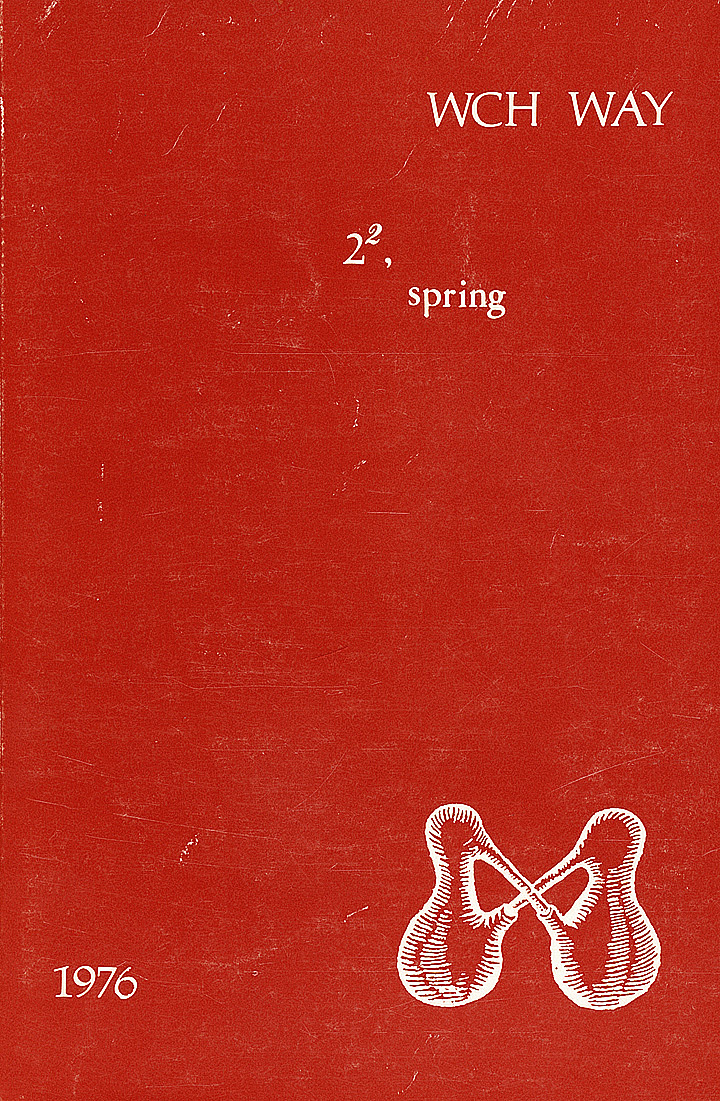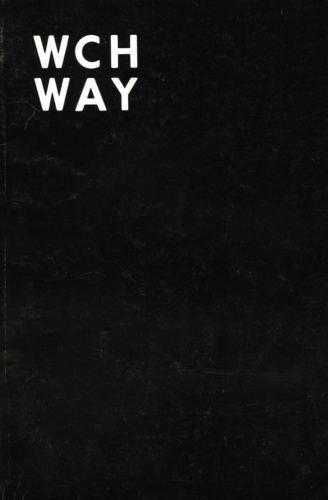Wch Way
Jed Rasula; later Jed Rasula and Don Byrd
Bloomington, Indiana; Los Angeles; and Albany, New York
Nos. 1–6 (1975–85).
Nos. 5 and 6 issued with New Wilderness Letter nos. 12 and 13.
Wch Way 2 (Spring 1976).

“BLOOMINGTON YOU ARE REAL DADA” reads the graffiti sign on the wall of an abandoned building in a photograph reproduced in Wch Way 1, and the magazine’s epigraph is from a 1940 movie starring Errol Flynn and Alexis Smith: “Ride ’em thru town!” Symbolic of postmodern, midwestern intellectualism, Wch Way was centered in a group of individuals associated with the venerable landgranted Indiana University who advocated a sophisticated, literary back-to-the-land approach to things poetic. The title of a poem/essay by David Wevill in issue number 1 says it: “We have lost our natural images. All the images we make are twisted, hammered, brilliant.” In its first four issues, the magazine presented a variety of long poems and prose works, including the romantic cavalier work of Tom Meyer (of Jargon) as well as selections from George Quasha’s poetic sequence “Somapoetics.” Transcriptions of discussions among the local members of the poetic community are included under titles such as “Multivocal Moontalk.” The third issue (also known as number 2²) includes one of Jackson Mac Low’s chance works from 1958, “Haiku, No Haiku,” based on a Funk & Wagnall’s dictionary and a poetry anthology edited by Louis Untermeyer.
By the fourth issue, Rasula had moved to Los Angeles and been joined by critic and language poet Don Byrd in his editorship; these two occurrences may explain the wild change in contributors for the issue, which includes Clark Coolidge, John Taggart, Barrett Watten, Charles Bernstein, and the Canadians Steve McCaffery and Christopher Dewdney. The issue begins with Robert Duncan’s poetic sequence “Santa Cruz Propositions,” prefaced by a statement by the poet: “The authentic text [is]…in my case, not the manuscript, which is conceived of as a prepositional sketch; and most certainly not the printed version, which represents the work and interpretational notion of someone else, but the present state of the typescript which comes from and is my own working hand and eye as concept ongoing.”

Wch Way 1 (Spring 1975).

Wch Way 6 / New Wilderness Letter 13 (1985).
